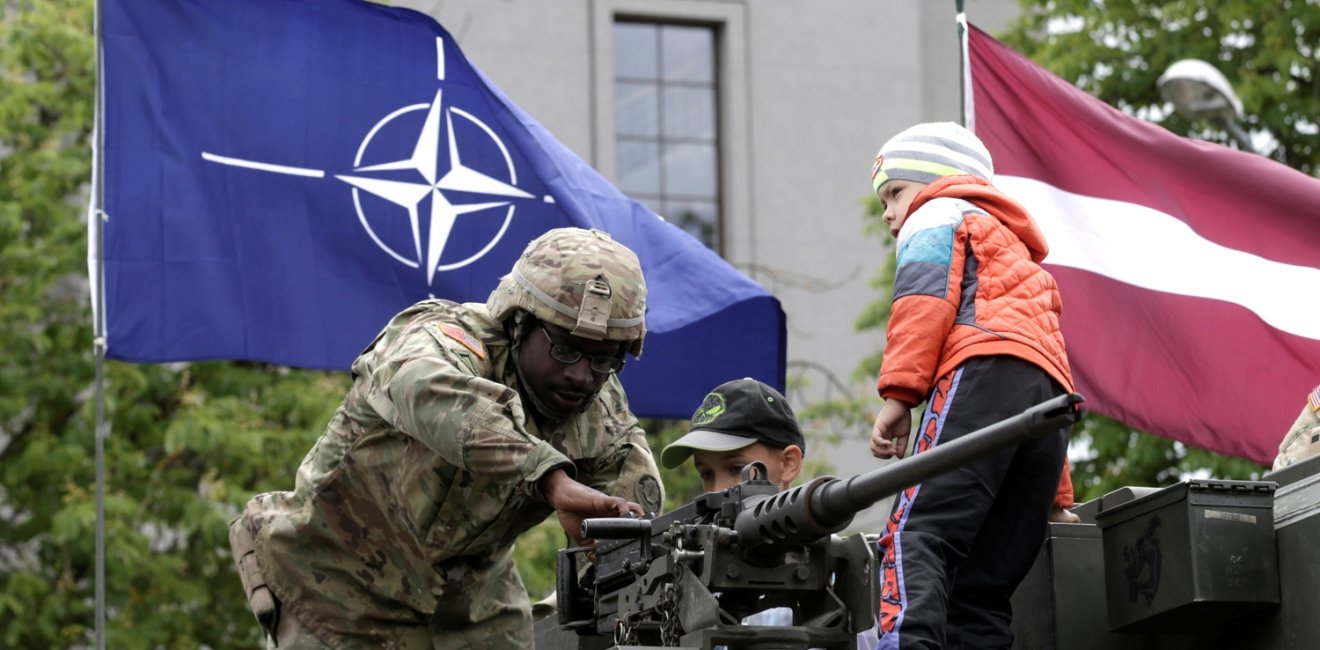
A blog of the Kennan Institute
Since 2015, NATO has steadily become consumed with the issue of deterrence, a seemingly ancient word that dominated Cold War discourse, which, along with other classical military terms of art, was recently reawakened in light of the Russian threat. After the 2014 Wales Summit, the Alliance sought to reassure nervous Baltic allies, increase the visibility of its presence, and jump-start a regiment of training and exercises. However, the further defense researchers and other analysts dug into the Baltic security issue, the more obvious it became that NATO indeed had a serious problem. The military reforms Russia launched in late 2008 and the expensive modernization program running since 2011 have restored its armed forces as a useful instrument of national power. While there are a host of limitations and caveats to this accomplishment, the reality for NATO is that the size and presence of the Russian military makes defense of the Baltics a dubious proposition at best.
Due to the geography of Russian forces stationed in Kaliningrad to the West and around St. Petersburg to the East, the Baltic States think of themselves as enveloped. Russia's ally, Belarus, borders them to the South, while North is the Baltic Sea, a shallow and enclosed body of water where most littoral states can easily effect sea denial to others. Since 2015, Western military planners have become seized of a possible Russian 'fait accompli' scenario in the Baltics, envisioning armored battalions rolling in and defeating NATO forces in 36-60 hours. Although there is nothing to suggest that Russia wishes to invade the Baltics, nor does it make sense to occupy three countries in order to break NATO's credibility, this fear lies at the heart of NATO's change in rhetoric from assurance to deterrence.
While there are a host of limitations and caveats to this accomplishment, the reality for NATO is that the size and presence of the Russian military makes defense of the Baltics a dubious proposition at best.
Unfortunately, these latest worries typify a field of Russia analysis in the West, which tends to lurch between one ill-formed theory and another. In 2014 and 2015, we experienced near panic over concerns that Russian forces would create a “land bridge to Crimea,” and we have now moved on to equally unlikely fears of a Russian “land bridge to Kaliningrad” in 2016. The Western approach to Russia looks for conceptual pillars as organizing principles to understand the threat, such as hybrid warfare, or the need for more deterrence in the Baltics. This is a shared problem, since Russian outlooks on U.S. military capability have long been characterized by unfounded fears and sensitivity bordering on the paranoid. The false gods of military analysis in Russia include alleged U.S.-orchestrated Color Revolutions and the near magical properties of American long-range conventional weapons. In the same vein, some Western officials have gone from dealing with a plausible contingency in the Baltics to believing it's really going to happen.
In reality, Russia has been repositioning permanent forces along Ukraine's borders in preparation for conflict escalation there, while paying little heed to the Baltic theater. The recent firing of the Baltic Fleet's command staff is illustrative not only of the woeful readiness of that force, but also that Moscow felt comfortable firing this fleet's leadership to send a message to more important naval units elsewhere. Countries that prepare for offensive operations, or anticipate attack, typically do not fire the entire command leadership, sending organizations into turmoil. Russia, if anyone, is well aware of its own historical mistakes when Stalin deeply wounded the military by purging much of the officer corps ahead of WWII.
When it comes to improving deterrence, NATO is trapped between the pointless and the reckless.
However, the Baltics represent a wicked problem for NATO. When it comes to improving deterrence, NATO is trapped between the pointless and the reckless. The recently approved proposal for four rotating battalions, led by four different countries, is still about assurance versus deterrence. This is a meaningless force from the standpoint of warfighting capability. America's promised armored brigade, due to arrive next year, will also be cut into numerous pieces and separated amongst European allies for reassurance. NATO has switched its language to deterrence, but in reality, military planners understand there is no prospect of successfully defending Baltic territory. Hence, much was said about deterrence at NATO's recent meeting, and little was done.
Simply speaking, the Baltics are impossibly difficult to defend. This was the case even before Russia's military reforms. The only recent change is that over 25 years, Western military officials have been distracted by a host of expeditionary counter-insurgency and counter-terrorism campaigns, and have become grossly unfamiliar with the European terrain and the Russian armed forces. The Russian forces in Kaliningrad have always been there, as have Russian air defenses, anti-ship missiles, and weapon ranges that make reinforcing the Baltic States in the event of war simply impractical. NATO is now struggling with the reality of needing to reconcile itself as a defensive alliance, while having spent the past two decades expanding as a political one.
The Warsaw Summit's answer was illustrative of the solution: simply rebrand assurance as deterrence. The odds are that few will notice, because despite Baltic fears, Russia has been successfully deterred by NATO all these years. Indeed, Moscow has a remarkable track record of invading countries to prevent them from joining NATO, no doubt because it believes in U.S. treaty commitments. More importantly, just as it did during most of the Cold War, the United States is able to deter Russian aggression effectively through punishment and conventional retaliation. That's not the ideal scenario, and plenty of work remains for the U.S. military to present a more credible deterrent via punishment in the European theater. However, Russia's ability to fight and win a conventional battle with the world’s superpower is very much in doubt, perhaps more so in Moscow than in the panicked circles of the Trans-Atlantic community.
The risk and costs of a conventional incursion in the Baltics grossly outweigh Moscow's prospects for military gains.
The escalation dynamics of this conflict are not favorable to Russia. A conventional entanglement can quickly spiral out into nuclear conflict, or escalate globally bringing the full power of the U.S. military to bear against a Russia that is far too vast for its armed forces to defend. The risk and costs of a conventional incursion in the Baltics grossly outweigh Moscow's prospects for military gains. Alternatively, unconventional approaches, such as mobilizing compatriot groups, offer much activity without much accomplishment. Baltic countries can likely handle such scenarios without NATO's help, and have been preparing for a Crimean-type use of Special Forces ever since Russia demonstrated its willingness to use such tools against non-NATO members. In truth, scenarios for this hypothetical fight tend to all have one thing in common: nobody can logically posit what is in it for the Russians.
Leveraging bellicose rhetoric to bluster in front of their domestic audience, Russian leaders have watched gleefully the flutter of NATO's political and military activity around the subject of deterrence. The more the Alliance frets over a war with Russia, the more it assumes a defensive posture, which preoccupies it and deters the organization from pursuing proactive policies in places Moscow truly cares about, like Ukraine. Indeed, from the unlikely Baltic high-end fight, to its increasingly successful military intervention in Syria, Russia has NATO preoccupied with everything other than Georgia and Ukraine.
This is a revised version of an op-ed published in Vedomosti on July 15, 2016.
Author

Senior Fellow, Russia and Eurasia Program, Carnegie Endowment for International Peace

Kennan Institute
The Kennan Institute is the premier US center for advanced research on Eurasia and the oldest and largest regional program at the Woodrow Wilson International Center for Scholars. The Kennan Institute is committed to improving American understanding of Russia, Ukraine, Central Asia, the South Caucasus, and the surrounding region through research and exchange. Read more

Explore More in The Russia File
Browse The Russia File
Chechnya as a Model of Modern Russia

Russia’s Indigenous Communities and the War in Ukraine

Gas and Power in a Changing US–Russia Relationship

